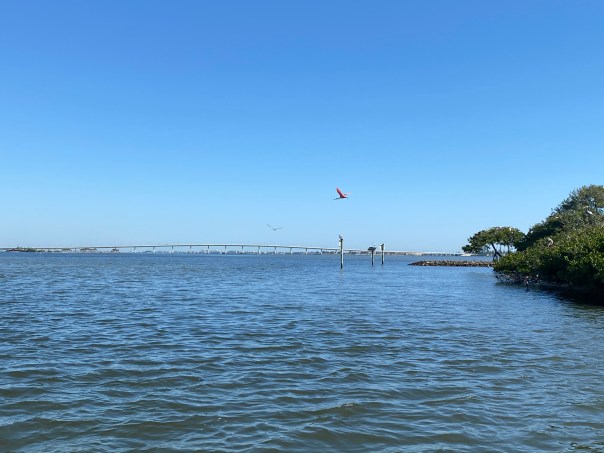
Today I am going to put aside the St. Lucie Canal to discuss another very important subject, the birds of the Everglades. Since the late 1800s drainage, farming, and development has drastically altered the avian environment. As we try to restore what we can, each year the SFWMD reports on nesting outcomes in SFER or the “South Florida Environmental Report.” This is done in “Water Years” that run from May 1 of one year to April 30th of the next.
At the May 11th, 2023 meeting of the South Florida Water Management District, I asked a question to presenter Lawrence Glenn about the “Ecological Conditions Update.” Mr. Glenn was explaining sensitivity to water/food levels and why it had been observed that hundreds to thousands of wood storks and white ibis in Water Conservation Area 3-A of the Everglades had evacuated their nests abandoning their young.
Mr. Glenn’s chart specifically focused on wood storks (WOST) and white ibis (WHIB). I inquired about other birds nesting in the Everglades. Mr. Glenn explained that for purposes of this scientific report wood storks and white ibis were the sentinel species.
~Note the decline of these species nests below below.
On May 24, 2023, about two weeks after the governing board meeting, I received an email in response to my question from SFWMD avian expert Dr. Mark Cook. I had had the pleasure of meeting and flying with Dr. Cook in a rare banner-nesting year, in 2021. Dr. Cook who oversees the SFER nesting bird reports gave an in depth explanation to my question about “other birds,” and how the science works. Thank you to the SFWMD and Dr. Cook for allowing me to reprint below. I wanted to share it with you!

Subject: Following up on your question about nesting in the Everglades (May GB)
Good morning, Ms. Thurlow-Lippisch. At the May Governing Board Meeting you asked Lawrence Glenn if there were other types of birds nesting in the Everglades aside from white ibis and wood storks. Dr. Mark Cook has responded to your question (below).
Yes, we have about 14 species of wading birds nesting in the Everglades, all of which are monitored to some degree for the wading bird report.
However, there are four species that are used specifically as indicator species to gage restoration success of the freshwater Everglades and to help guide water management: white ibis, wood storks, snowy egrets and great egrets. Multiple aspects of their reproduction are monitored including nesting effort, timing of nesting, location of nesting and reproductive success (numbers of offspring produced per nest). Of these four species, the stork and ibis are particularly useful for understanding the health of the everglades because they are tactile foragers (feed by touch) meaning they need higher densities of prey to feed effectively compared to the visually feeding egrets and in turn their nesting patterns are highly dependent on getting the water right – the right amount of water at the right time and place. Historical hydrological conditions were particularly conducive to successful nesting of these two species. A good example of this was the relatively wetter conditions on the coastal marshes and western prairie marshes in Everglades National Park that promoted good prey production and allow for early nesting of storks and massive super colonies of white ibis in the coastal colonies.
For Florida Bay we have a single indicator species, the roseate spoonbill. This pink beauty is also a tactile forager and as such is highly sensitive to hydrological conditions within the coastal marshes of eastern Florida Bay. This species was almost exclusively restricted to nesting and foraging in Florida Bay but within the past decade it has moved inland to the freshwater Everglades probably because sea level rise has increased water levels in the coastal foraging areas. This species is generally doing poorly in the bay but relatively well in the freshwater Everglades.
As predicted given the relatively dry antecedent conditions, this nesting season has not been a great year for the five indicator species. Nesting effort (numbers of nests) was about average but nest success has ben very low for all species except perhaps the snowy egret. White Ibis and great Egrets started abandoning nests in March-April probably because prey was limited in the Everglades after last year’s extensive drying of WCA-3A. In addition, extensive rain-driven reversals (loss of concentrated prey) in April finished off many of the remaining ibis and egret nests and led to the complete abandonment of wood stork nests in WCA-3A and significantly reduced their nests in ENP. Surprisingly, snowy egrets seem to be doing quite well, possibly because they are feeding in the STAs or elsewhere. My colleagues from University of Florida, who monitor nesting on the ground, have reported very poor growth rates of nestling and high levels of starvation in all species except snowy egrets. Nesting data are currently being processed and will be available as soon as possible.





















